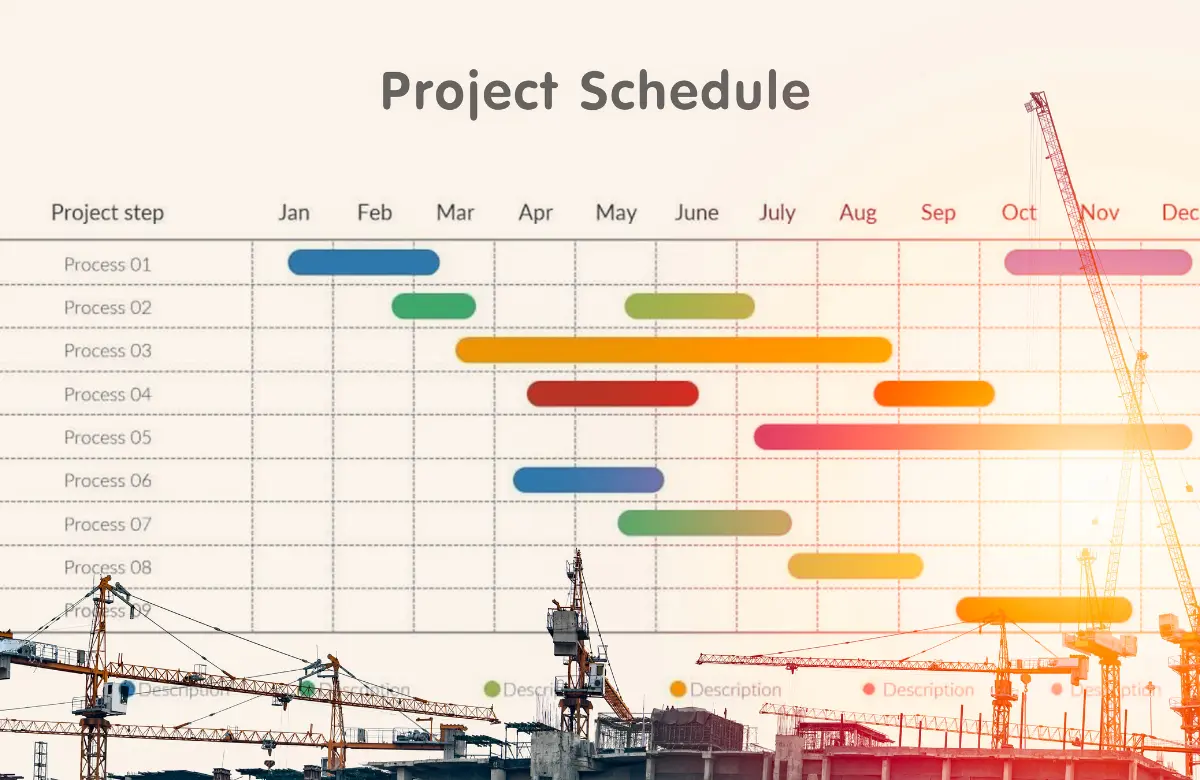Negative float is a critical but often misunderstood concept when it comes to managing projects effectively.
In simple terms, a negative float in project management indicates that the planned duration is insufficient to meet the project completion date.
As a project manager, knowing how to identify, analyze, and resolve negative float is invaluable.
Mastering techniques to adjust negative float can make the difference between a project that gets derailed and one that comes in on time and within budget.
In this post, we take an in-depth look at what negative float means, its causes, and how to fix it. We also provide tips on negative float for the PMP certification exam.
What is Float in Project Management?
Float or slack in project management is the amount of time a project activity can be delayed without impacting the overall project finish date.
It is calculated by subtracting the time required to complete an activity from the time available for that activity.
Float provides scheduling flexibility. If an activity has float, it can start later or take longer than originally planned without delaying project completion.
When managing a project, an understanding of float allows you to prioritize activities, allocate resources efficiently, and determine the project’s critical path.
Also, monitoring float helps identify schedule problems early. For example, if an activity’s float suddenly drops to zero, it indicates the activity is now on the critical path.
Activities on the critical path have zero float and push out the finish date if delayed. If the float turns negative, then the activity has fallen behind schedule and immediate action is needed to get back on track.
Types of Float in Project Management
Float is generally categorized as either total float or free float:
- Total float is the amount of time an activity can be delayed without delaying the project’s finish date. It represents flexibility for scheduling the activity.
- Free float is the amount of time an activity can be delayed without delaying its earliest successor activity. It defines flexibility in scheduling before impacting other activities.

Negative Float Meaning
While a positive float provides scheduling flexibility, a negative float indicates a serious problem.
A negative float occurs when an activity falls behind its late finish date, meaning it no longer has any room left in the schedule and the planned duration is now insufficient for the activity to be completed on time.
Technically, negative float shows the amount of time the activity must now be crashed or accelerated to meet the project end date.
For example, if an activity has -3 days of float, it means the activity is already 3 days late and needs to gain back these 3 days to avoid delaying everything else.
Seeing a negative float is a red flag as it means the activity will miss its late finish date and impact other tasks and project completion unless corrective action is taken immediately.
It’s important to keep an eye out for negative float is critical as it provides an early warning about schedule problems. Analyze what is causing the negative float, then immediately take the necessary action to fix it.

Causes of Negative Float
Understanding the root causes of negative float is key to preventing and resolving it. Some common sources of negative float include:
Delays on the Critical Path
The most typical cause of negative float is delays to activities that are on the critical path.
Since these activities have zero total float, any delay immediately turns their float negative.
For example, if a critical path task was estimated to take 5 days but took 7 days, the extra 2 days will show up as -2 float. The activity now needs to gain back 2 days somehow.
Delays on the critical path have a cascading effect on the activities that follow as the negative float gets propagated downstream until the schedule gets back on track.
Missed Constraints
Another major cause of negative float is missing date constraints placed on tasks. Constraints like “Start No Earlier Than” or “Finish No Later Than” lock activity dates to specific deadlines.
If the network logic causes an activity to miss a constraint date, it shows a negative float equal to the number of days it missed the deadline by.
Removing unrealistic constraints is the best way to resolve this negative float. Changing the preceding logic also allows the constrained date to be met.
Resource Issues
Inadequate resourcing can cause delays that lead to negative float. If activities take longer than planned due to insufficient resources, the added duration causes them to miss late finish dates and results in negative float.
Careful resource allocation and leveling are needed to prevent resource issues from dragging out activities beyond their planned durations.
Proactively monitoring float and resource usage is key to catching delays before they cascade through the schedule.

Negative Float Example
Let’s look at a simple example to understand how negative float occurs.
Imagine an IT project with three sequential activities:
- A – Design database structure (5 days)
- B – Develop database (10 days)
- C – Test database (5 days)
The project’s total duration is 20 days, and each activity has 5 days of float.
Activity A finishes on Day 5. While Activity B takes 15 days instead of 10 days due to unexpected issues, and finishes on Day 20 rather than Day 15.
Here’s how this affects the float and causes negative float on Activity C:
- Activity A float is unchanged at 5 days
- Activity B float becomes 0 days (used up its 5 day float)
- Activity C is now scheduled to finish on Day 25
- Since the project deadline is Day 20, Activity C has -5 days of float
This means Activity C is now 5 days late and needs to be accelerated to be completed within the remaining project duration.
In this example, the negative float was caused by Activity B taking longer than planned. The delay burned through its float and also absorbed the float from the next activity.
To resolve the issue, your options if you are managing this project include:
- Crash Activity C duration to finish in 15 days instead of 20
- Add resources to Activity C to accelerate its work
- See if Activity A has any remaining float to absorb the delay
As earlier iterated, the key is acting quickly and proactively on the negative float warning sign to get the project timeline back on track.

How Do You Fix a Negative Float?
Seeing a negative float in your project schedule is a problem that requires decisive action.
Here are some proven strategies to fix negative float and recover the project schedule from delays:
1. Analyze the Critical Path
Carefully analyze the critical path leading to the negative float activity and identify what caused the delay and absorbed the float by looking at task dependencies and constraints.
Understanding the root cause is key to pinpointing the most effective resolution as this helps prevent similar issues elsewhere in the project.
2. Crash Duration
If possible, crash or accelerate the activity duration to reduce it by adding resources like more staff or equipment to perform the work faster and make up the negative float.
Crashing duration is effective when extra resources are readily available and the work can be sped up.
3. Release Date Constraints
Any tight constraints on the critical path can often be delayed to absorb the negative float. Review the constraints to see if any finish dates can be extended.
Releasing constraints gives the activity more time to complete and resolve the float deficit.
4. Renegotiate Activity Durations
Discuss extending durations with stakeholders for critical path tasks. Making durations more realistic can help alleviate negative float situations.
5. Review Resource Allocation
Look at resource allocation on the critical path as freeing up resources from non-critical activities may help expedite critical ones faster.
6. Consider Scope Reduction
As a last resort, review the possibility of reducing activity scope to shorten durations. This should involve stakeholder alignment.
Positive Float vs Negative Float
Let us compare positive float vs negative float to have an understanding of how they differ and affect your project.
Scheduling Flexibility
Positive float indicates scheduling flexibility so the activity can be delayed within the float duration without impacting other tasks or the finish date.
Negative float on the other hand signifies a lack of flexibility so the activity must be accelerated just to meet its late dates.
Impact on Other Tasks
Positive float means delays in an activity only affect tasks after it’s completed while other work can proceed unaffected.
In contrast, negative float indicates delays that impact all subsequent activities, and these delays cascade down the schedule.
Critical Path Status
Positive float activities generally lie off the critical path so extending their duration does not make them critical.
Negative float activities often lie on the critical path and require more resources and oversight.
Project Health
Positive float is welcomed as a buffer against delays in a healthy schedule, and more float offers more flexibility.
However negative float is a sign of poor schedule health where immediate corrective action is needed to improve the situation.
Contingency Planning
Positive float allows better contingency planning for known risks and issues. More float provides more of a cushion.
Negative float on the other hand indicates contingency plans may have failed and revisiting risk mitigation is required.
Project Deadline
With positive float, the finish date has room for activities to extend without postponing project completion.
In contrast, a negative float means the finish date is now at risk unless activities are accelerated to compensate.
Managerial Effort
Minimal oversight is required when dealing with positive float activities as the project schedule has room to absorb some delays.
Conversely, negative float needs intense management focus as any delays will balloon without aggressive intervention.

Negative Float PMP Exam Tips
In preparing for the PMP exam, it’s crucial to understand the concept of negative float and its implications in project management.
Negative float, also known as negative slack, occurs when the calculated early start and finish dates for a task are later than the scheduled start and finish dates, indicating that the project timeline is at risk.
According to the PMBOK guide, a negative float is often a consequence of misalignment between the project schedule and constraints.
It is most commonly identified during the ‘Control Schedule’ process, where project performance is measured against the project management plan.
The ‘Develop Schedule’ process can also reveal negative float when using scheduling tools like the Critical Path Method (CPM) or Precedence Diagramming Method (PDM).
As a PMP candidate, you should be adept at recognizing the causes of negative float, such as unrealistic schedule baselines, scope changes, or resource constraints.
Mitigating negative float involves techniques such as schedule compression (crashing or fast-tracking), reallocating resources, or negotiating for revised deadlines.
Understanding negative float is vital, as it signals the need for immediate corrective action to bring the project back on track.
On the exam, expect scenarios requiring analysis of project schedules to identify and resolve negative float to ensure project success.
Keep in mind that questions on negative float may not only test your knowledge of its definition but also your ability to apply corrective actions within the PMBOK guide’s recommended processes.
Conclusion
Whether you’re a project manager or project team member, understanding negative float is crucial for executing projects successfully.
Mastering the causes, impacts, and solutions for negative float will make you adept at keeping projects on track.
With the right knowledge and tools, negative float doesn’t have to derail your schedule.
Stay vigilant in monitoring float, act decisively when it turns negative, and you can lead projects smoothly to on-time completion.
FAQs
Is Negative Float Acceptable?
Negative float in project management is generally not acceptable as it signals scheduling problems and implies that tasks must be expedited to meet deadlines, necessitating review and adjustment of project plans.
What Happens if Total Float is Negative?
If the total float is negative, the project is behind its planned schedule. Immediate action is required to reallocate resources, adjust timelines, or revise scope to recover lost time and ensure critical milestones are met.





